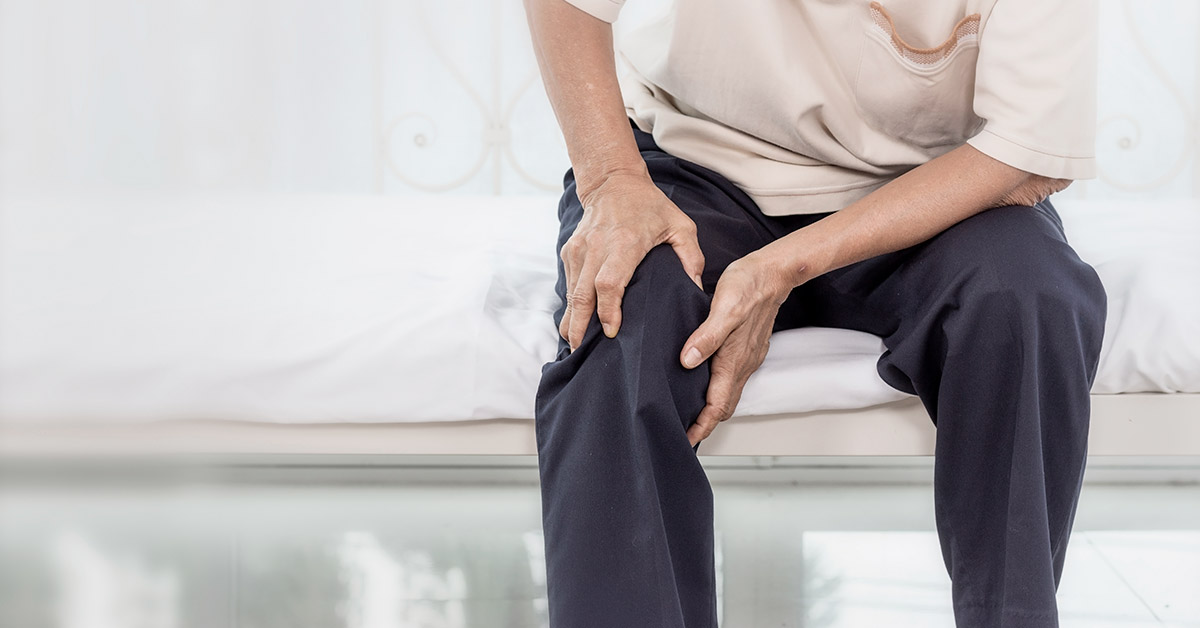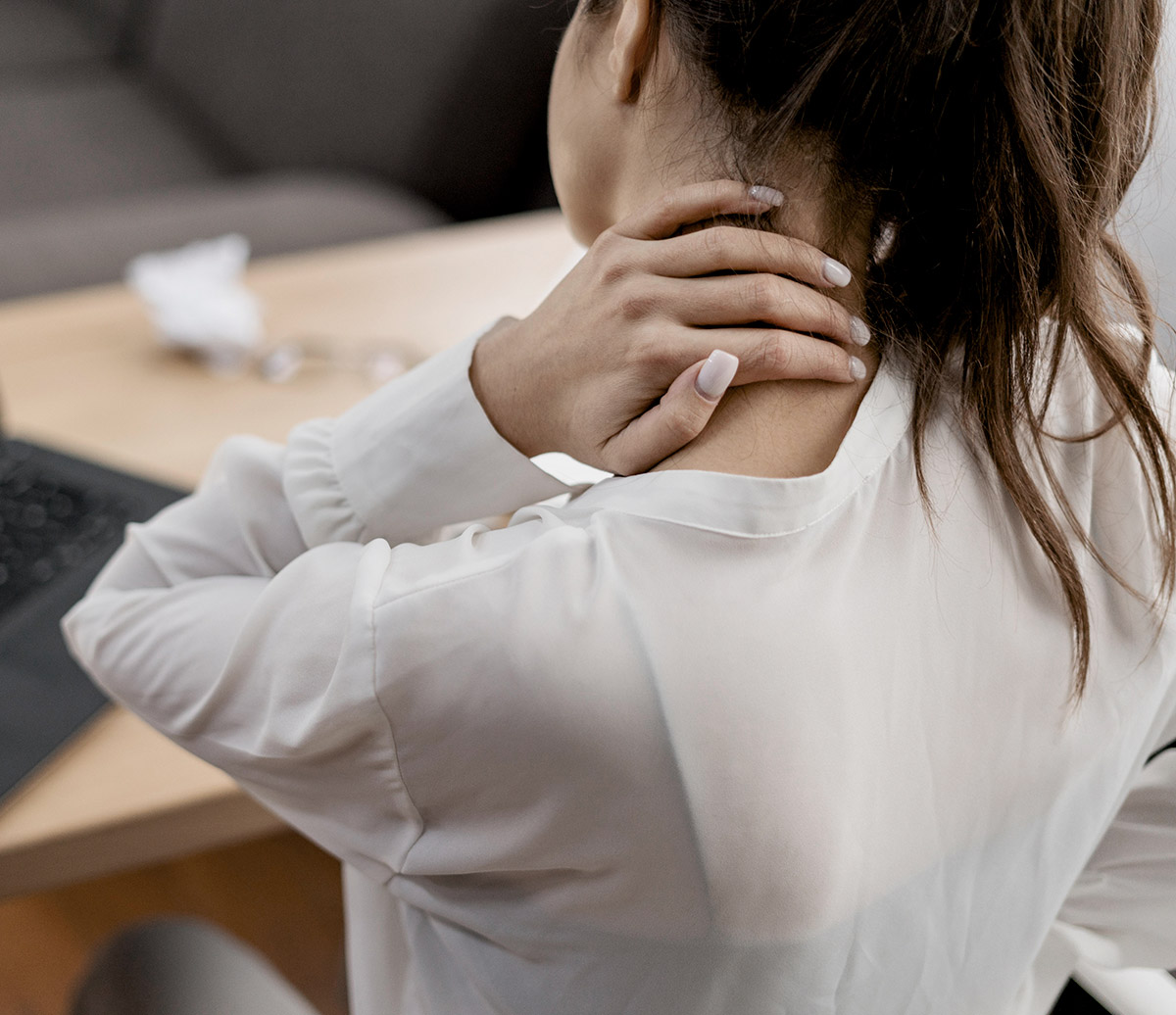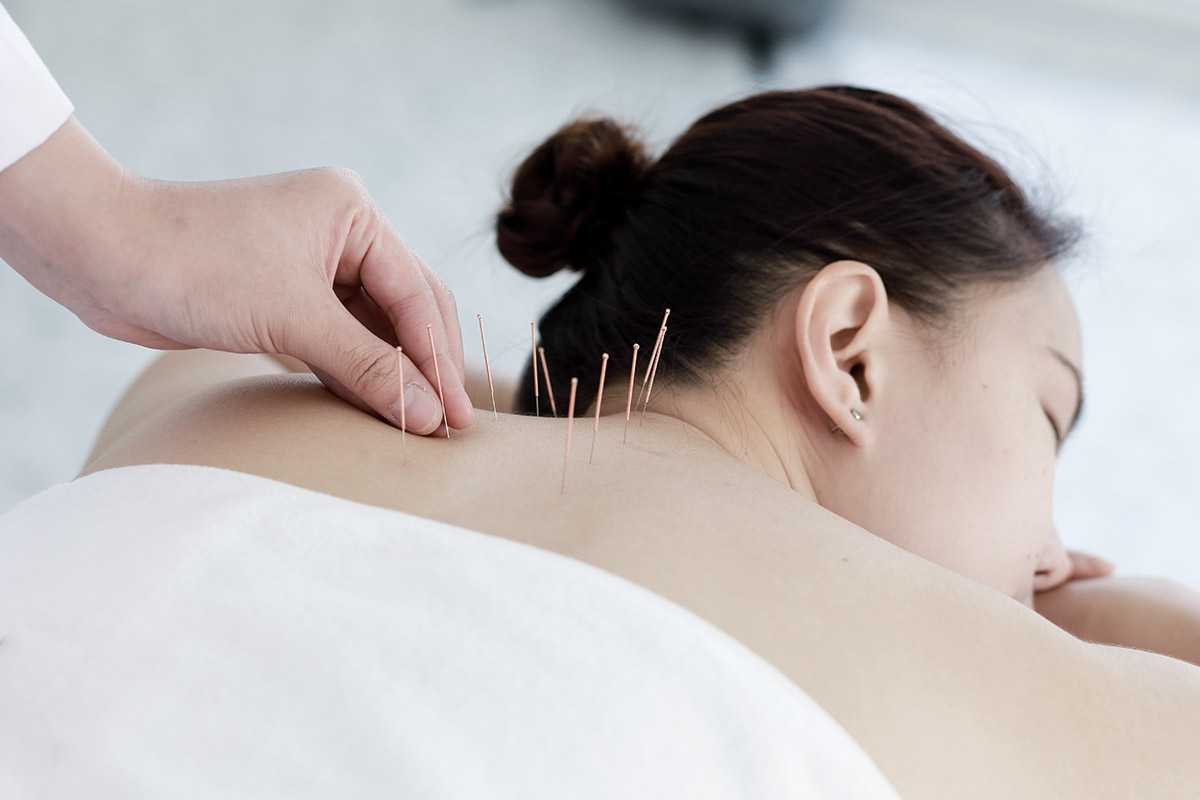Boyun ağrısı bel ağrısından sonra en sık karşılaşılan ve en sık doktora başvuru nedenlerinden biridir. Bir kişide yaşamı boyunca boyun ağrısının görülme oranı %14- 70 arasında değişmektedir.
Boyun Ağrısının Nedenleri Nelerdir?
- Nedeni Belli Olmayan Boyun Ağrısı: Boyun ağrısının nedeni genellikle bulunamayabilir. Fakat boyun ağrısına zemin ağrısına zemin hazırlayan faktörler arasında uygunsuz duruş bozuklukları (kambur durma gibi), psikolojik bozuklukları, sportif faaliyetler veya işe bağlı nedenler ortaya çıkabilir. Bunlar içinde de en sık boyun ağrısı, uzun süreli masa veya bilgisayar başında oturarak çalışanlar, yük taşıyanlar, diş teknisyenleri, baş seviyesinin üzerinde yapılan işlerde çalışanlar, uzun süreli telefon kullananlarda görülür.
- Boyun Ağrısı Kas ve Bağlarında Oluşan İncilme ve Zorlanma: Boyun Ağrısının en sık görülen nedenleridir. Ani boyun hareketleri, aşırı stres, kötü postür, uygun olmayan uyku ve yatış alışkanlıkları, soğuk maruziyeti gibi nedenlerle gelişebilir. Belirtileri 2 gün içinde gelişir ve bir kaç günde etkileri azalır. Ağrılı durumda, boyun hareketleri kısıtlı, boyun kaslarında kasılma sonucu boyunda düzleşme görülebilir.
- Boyuna Gelen Direkt Darbe (Whiplash [Kamçı Yaralanması]): Araba kullanırken arkadan araç çarpması sonucunda boyunda ani arkaya eğilme ve hemen sonra da arkaya bükülme görülür. Kemikte, disklerde, kaslarda, eklemlerde , bağlarda hasar ve kopmalar görülür. Boyun arkasında ağrı, boyun kaslarında kasılma, başağrısı, işitme, uyku problemleri, uyuşmalar görülebilir.
- Boyunda Kireçlenme (Servikal Spondiloz): Omurga, omurga eklemleri, disk ve bağlarda hasar oluşmaktadır. Kireçlenme en sık geliştiği boynun en hareketleri yelerinde (c5-C6 ve c6-c7) olur. Omurilik ve sinir kökleri etkilenebilir.
- Boyun Fıtıkları: Boyun fıtıkları en sık c5-6, C6-7 segmentlerinde görülür. Bu durumlarda hastanın sinirin uyardığı alanlarda bozukluklar oluşur. Yani kol ve ellerde güçsüzlük, duyu azalması görülebilir. Aynı zamanda omurilikte direkt bası olup kol ve bacak kaslarında ilerleyici güçsüzlük, uyuşmalar, yürümede güçsüzlük, idrar ve büyük abdest kaçırma ortaya çıkabilir. Servikal myelopati tespit edilirse omurga cerrahına başvurmak gerekmektedir.
- Diğer Nedenler: Yumuşak doku romatizması (fibromyalji), miyofasial ağrı, spondilartropati denilen romatizmal hastalıklar, tümör, enfeksiyon ve yansıyan organ ağrıları (kalp-aort hastalıkları, hiatus hernisi , akciğer apeksi, safra kesesi, özofagus ve pankreasta oluşan değişiklikler de boyuna vuran ağrılar yapar.) boyun ağrıları yapan nedenlerdir.

Boyun Ağrısı Belirtileri Nelerdir?
Boyun ağrısı sadece boyunda ağrı oluşturmakla beraber boyun ağrısıyla tutuk boyun olması, boyundan ele yayılan uyuşma, ağrı, baş ağrısı, kolda veya elde güçsüzlük gibi şikayetlere de neden olmaktadır. Boyun ağrısı genelde hafif olmakla beraber nadiren çok ağrılı olabilmektedir. Omuriliğe bağlı boyunda problem olduğunda ise kol-el ve bacaklarda ilerleyici güçsüzlük, uyuşma, yürüme bozukluğu ve idrar ve büyük abdest kaçırma görülür.
Boyun Ağrısı Tanısı Tedavisi Nedir?
Boyun ağrısı genelde hiçbir özel tedavi yapılmasa da kendiliğinden geçebilmektedir. Boyun ağrısı uzun sürdüğünde boyun ağrısı oluşturan nedenlere yönelik tedavi yapılmaktadır. Boyun ağrısının tedavisinde öncelikle hastanın eğitimidir. Hasta eğitiminde, hastaya boyun ağrısı önlenmesi konusunda yardımcı olmak hedeflenir. . Kişiye özel boyun egzersizleri verilmesi içerir ve aynı zamanda günlük yaşamda dikkat etmesi gerektiği konular, iş ve ev yaşamında doğru duruş konusunda eğitilir.
Boyun okulunda ise, boynun anatomi, biyomekaniği, boyunda oluşabilecek patolojiler ve boyun ergonomisi konusunda bilgiler verilir. Amaç, hastanın yaşam aktivitelerinde hasara yol açmadan nasıl yaşaması gerektiği öğretmektir. Hastanın genel postürünün nasıl koruması gerektiği öğretilmelidir. Boyun hastalığı olanlarda en sık olan duruş bozukluğu başın önde olmasıdır. Bunun için hastalara yapacakları egzersizler öğretilir.
Boyun ağrısının diğer tedavilerinde, ilaç tedavisi (kısa süreli), fizik tedavi ajanlarının yanında tamamlayıcı tıp tedavileri (ozon, PRP, akupunktur, proloterapi, kuru iğneleme, tetik nokta enjeksiyonları), akupunktur, manipülasyon/mobilizasyon ve temel tedavi edici egzersizlerden (güclendirme egzersizleri, mobilite egzersizleri, postür egzersizleri, stabilizasyon egzersizleri, propriyoseptif egzersizlerden) oluşur.
Boyunluk, boyun ağrısında bir haftadan fazla kullanılmaz. Boyunluk kullanırken bile izometrik egzersiz ( kasın boyu değişmeden kasın gücünün arttırılması) denilen güçlendirme egzersizleri uygulanmalıdır.
Boyun Ağrısı Olan Kişide ACİL Olarak Doktora Yönlendirilmesi Gereken Durumlar Nelerdir?
- Boyun fıtığı olan hastada ilerleyici kas gücü kaybı olması
- Boyun fıtığı olan hastada idrar ve gayta ( büyük abdest) kaçırma olması
- Yapılan tedavilere karşın ağrının geçmemesi ve şiddetlenmesi
- Geceleri artan boyun ağrısı, kilo kaybının olması
- Boyun ağrısıyla beraber ateşin olması
- Boyun ağrınsın travma bile seyretmesi
- Derin sızlama ve yanma hissi ile el ve parmaklarda güçsüzlük (örneğin yazı yazmada zorluk kollarda güç kaybının olması, yürüme zorluğu ve dengede bozulma
Boyun Ağrısı Olan Hasta Ne Zaman Cerrahi Tedaviye Yönlendirilmektedir?
- Kol ve bacaklarda ciddi ve ilerleyen güç kaybı, his ve refleks azalması
- Omurilikte değişiklikler olması (myelopati)
- Omurgada tümör veya irin (abse) olması
- Ciddi omurilik ve sinir basısı olması
Boyun Ağrısı Olan Kişilerde Faydalı Öneriler
- Asla ağır cisimleri kaldırmayın, çekmeyin ve itmeyin. Taşıyacağınız yükleri eşit olarak her iki elinize bölün.
- Başınızla yük taşımayın. Baş seviyesinin yukarısına doğru yük kaldırmayın.
- Boynunuzu sürekli öne eğik veya aynı pozisyonda sabit tutmayın.
- Telefonla konuşurken telefonu boyun- omuz arasında sıkıştırmayın.
- Otururken sırtınızı düz tutun ve yaslanın.
- Gerekirse boyun kıvrımınıza uyan boyun yastığı ile boynunuzu koruyun.
- Aşırı yüksek yastık kullanmayın.
- Çalışma şartlarınızı ve koşullarınızı iyice düzenleyin.
- Özellikle bilgisayar ve masa başında 30 dakikada bir pozisyon değiştirin
Causes and Treatment Plan of Neck Pain
Neck pain, second to lower back pain, is the most common reason for consulting a doctor. The incidence of neck pain varies between 14-70% in a person's lifetime.
What are the Causes of Neck Pain?
- Neck Pain due to Undetermined Cause: The cause of neck pain often cannot always be found. However, among the factors that predispose to neck pain are inappropriate posture disorders (such as hunching), psychological disorders, sports activities, or work-related causes. Among these, neck pain is most common in those whose work involves sitting at a desk or computer for a long time, those who carry loads, dental technicians, and those who use telephones for a long time.
- Tension and Strain in Neck Muscles and Ligaments: These are the most common causes of neck pain. It may develop due to sudden neck movements, excessive stress, bad posture, inappropriate sleeping positions and habits, cold weather. Its symptoms develop within 2 days and its effects subside in a few days. In painful conditions, neck movements are limited, neck can be straightened as a result of muscle contractions.
- Direct Impact to the Neck [Whiplash]: Whiplash is neck injury caused by sudden, vigorous head movement in one direction, then back again quickly, often caused during a motor vehicle accident. Damage and ruptures are observed in the bones, discs, muscles, joints, ligaments. Pain behind the neck, contraction in the neck muscles, headache, hearing and sleep problems, numbness can be seen.
- Calcification of the neck (Cervical Spondylosis): Damage occurs in the spine, spinal joints, disc, and ligaments. Calcification occurs most frequently in the neck's most moving regions (c5-C6 and c6-c7). The spinal cord and nerve roots may be affected.
- Neck Hernias: Neck hernias are most seen in the c5-6, C6-7 segments. In these cases, weakness and decreased sensation in the arms and hands can be seen. At the same time, there may be direct pressure on the spinal cord and progressive weakness in the arm and leg muscles, numbness, weakness in walking, urinary and fecal incontinence may occur. If cervical myelopathy is detected, it is necessary to consult a spine surgeon.
- Other Reasons: Other causes of neck pain include soft tissue rheumatism (fibromyalgia), myofascial pain, rheumatic diseases called spondyloarthropathy, tumors, infections and reflected organ pains [heart-aortic diseases, hiatus hernia, lung apex, gallbladder, esophagus, and pancreatic changes also cause neck pain.]
What Are Neck Pain Symptoms?
Neck pain not only creates pain in the neck, but also causes complaints such as stiffness, numbness radiating from the neck to the hand, headache, weakness in the arm or hand. Neck pain is usually mild, but it can rarely be very painful. When there is a problem in the neck related to the spinal cord, progressive weakness, numbness in the arms, hands, and legs, gait disturbance and urinary problems are seen.
What is the Treatment of Neck Pain?
Neck pain usually goes away on its own, even if no special treatment is applied. When neck pain lasts for a long time, a treatment is chosen according to the cause of pain. The first step in the treatment of neck pain is the education of the patient. In patient education, it is aimed to assist the prevention of neck pain. The education includes personalized neck exercises, things to consider in daily life and correct posture in work and home life.
In the neck school, information is given on the anatomy, biomechanics of the neck, pathologies that may occur in the neck, and neck ergonomics. The aim is to teach the patient how to live without causing damage to his life activities. The patient should be taught how to maintain the general posture. The most common posture disorder in patients with neck disease is the forward head posture. The patients are given some exercises for this disorder as well.
Other treatments of neck pain include pharmaceutical therapy (short-term), physical therapy agents, as well as complementary medicine treatments (ozone, PRP, acupuncture, prolotherapy, dry needling, trigger point injections), acupuncture, manipulation/mobilization and basic therapeutic exercises (strengthening exercises, mobility exercises, posture exercises, stabilization exercises, proprioceptive exercises).
A neck brace is not used for more than a week for neck pain. Even when using a neck brace, strengthening exercises called isometric exercises (increasing the strength of the muscle without changing the length of the muscle) should be performed.
What are the situations that requires a doctor consultation URGENTLY?
- Progressive loss of muscle strength
- Urinary and fecal incontinence
- Pain persistence and aggravation despite treatment
- Increased neck pain at night, weight loss
- Fever with neck pain
- Neck pain with trauma
- Weakness in the hands and fingers with a deep tingling and burning sensation (for example, difficulty in writing, loss of strength in the arms, difficulty in walking and impaired balance)
When is a Patient with Neck Pain Referred to Surgical Treatment?
- Serious and progressive loss of strength in the arms and legs, decreased sensation and reflexes
- Changes in the spinal cord (myelopathy)
- Tumor or pus (abscess) in the spine
- Severe spinal cord and nerve compression
Useful Advice for People with Neck Pain
- Never lift, pull or push heavy objects. Divide the loads you will carry equally on both hands.
- Do not carry a load with your head. Do not lift loads above head level.
- Do not keep your neck bent forward or in the same position all the time.
- Do not put the phone between neck and shoulder while talking on the phone.
- While sitting, keep your back straight and lean.
- If necessary, protect your neck with a neck pillow that fits your neck curve.
- Do not use excessively high pillows.
- Organize your working terms and conditions thoroughly.
- Change positions every 30 minutes, especially while working at desk





